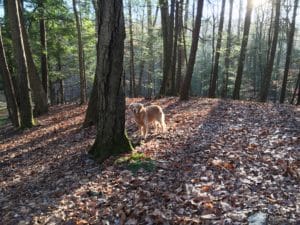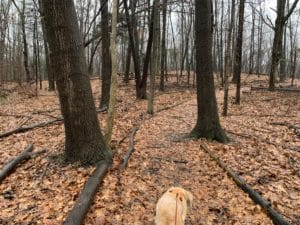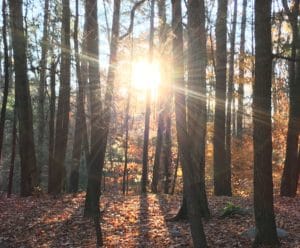Hello fellow readers,
We’ve shared the intrigue of two living fossils – Ginkgo biloba and the Umbrella Pine, both living in the days of the dinosaurs and surviving the Ice Age. The magnitude of their endurance is inspiring. And they’ve shared roots beyond the roots of their origin. Trees are connected and need each other to survive, just like people need each other, as do plants and animals. And there are insights we can learn from the interdependence of trees.

I often reference the book by Peter Wohlleben, The Hidden Life of Trees: What They Feel, How They Communicate―Discoveries from a Secret World. Science is fascinating and parallels human relationships and relationships between all aspects of life.
Trees need each other.
There’s a rumor that forests require thinning out to create a healthy environment for older trees— giving them more space and light. The logic stems from the forestry industry – commercial operations that grow trees for wood and paper products. But as Peter Wohlleben writes, “When trees grow together, nutrients and water can be optimally divided among them all so that each tree can grow into the best tree it can be. If you ‘help’ individual trees be getting rid of their supposed competition, the remaining trees are bereft. They send messages out to their neighbors in vain. Because nothing remains but stumps.”
He explains that cutting trees in the forest may make the remaining trees grow better for a while, but they won’t necessarily be long-lived. Trees depend on their community to survive. Even robust trees get sick during their lives and rely on their frailer neighbors for help. Without them, they become at risk of dying. And if they do, the weaker trees will too.
Interestingly, Wohlleben used the word “bereft,” meaning deprived or lacking something. Or if a person, bereft means sad or lonely. And so, by cutting back understory trees, we are harming the health of the forest. Still, like most things, there’s more to the story. But what is consistent is how roots communicate underground by fungi, many kinds, depending on the cultural environment.

Lodestar Park Successional Forest
How Trees are Interconnected
Some scientists say mycorrhizae are fungi found naturally in soil for over a billion years. Because filaments, called hyphae, spread two hundred times farther than roots, they extract more water and nutrients, especially phosphorus, that transfers to roots. It helps plants increase their resistance to pests and disease, plus it helps them grow faster, produce more fruit, and overcome the impact of drought and salt stress. In turn, the plant provides the sugar the Mycorrhiza needs.
This friendship goes well beyond sharing nutrients. Mycorrhiza emits enzymes toxic to organisms like nematodes. More fascinating is plants connected by Mycorrhiza share warning signals that help prepare them to defend themselves.
Say aphids attack; the plant emits compounds that entice aphid predators. More than that, the fungi connected to adjacent vegetation produce the same compound, protecting their neighbors before they are attacked. They say ninety percent of all plants have this friendship, though there are different types of Mycorrhizae. Most have a blend of the kinds so that flora will find their match.
Communities will thrive if we treat our neighbors as ourselves

It’s the time of year of giving, but giving good deeds and kindness outweighs material things. As shared by the opening line in the Prayer of Saint Francis:
“Lord, make me an instrument of your peace: where there is hatred, let me sow love…”
Imagine the collective energy toward peace we can grow. Merry Christmas, or whatever holiday you celebrate, I wish you hope, love, and peace.
Garden Dilemmas? AskMaryStone@gmail.com (and your favorite Podcast App.)There’s more to the story in Episode 88 of the Garden Dilemmas Podcast:
Links to a related column:
Merry Season of Love over Fear



Merry Christmas and Happy, Healthy New Year! Thank you as always for all you do to inform and inspire….
Cheers,
April
Thank you, April; Merry Christmas and Happy New Year! Thank you for your kind words and for reading my column. It means so much, Mary
Did I ever tell you that one of the reasons I gave Joe for staying in NJ in our early marriage was to be near trees? Now I love the saguaro cactus as much as I do our trees.
I love that, Nancy; All plants are beautiful. Thanks for sharing and for reading my column, Mary